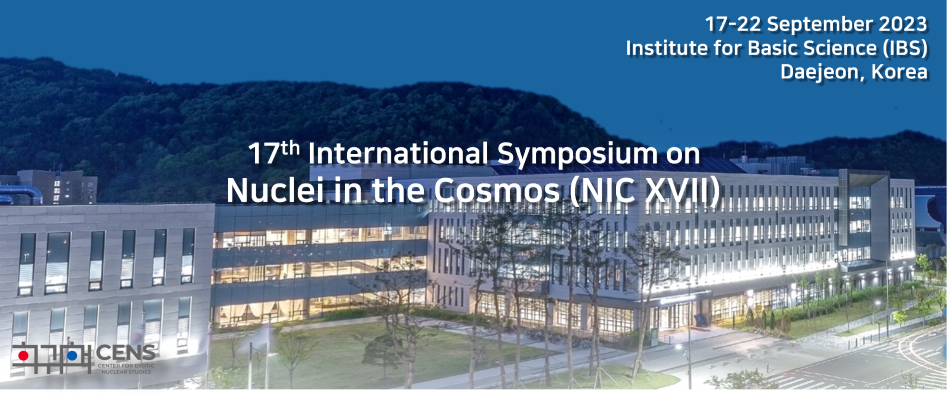Speakers
Description
Simulations of explosive nucleosynthesis in novae predict the production of the radioisotope $^{22}$Na. Its half-life of 2.6 yr makes it a very interesting astronomical observable by allowing space and time correlations with the astrophysical object. Its $\gamma$-ray line at 1.275 MeV has not been observed yet by the $\gamma$-ray space observatories. This radioisotope should bring constraints on nova models. It may also help to explain abnormal $^{22}$Ne abundance observed in presolar grains and in cosmic rays. Hence accurate yields of $^{22}$Na are required. At peak nova temperatures, the main destruction reaction $^{22}$Na($p,\gamma$)$^{23}$Mg has been found dominated by a resonance at 0.204 MeV corresponding to the $E_x=$7.785 MeV excited state in $^{23}$Mg. However, the different determinations of the strength of this resonance disagree, resulting in uncertainties of one order of magnitude for the expected mass of $^{22}$Na ejected in novae [1].
An experiment was performed at GANIL facility to measure both the lifetime and the proton branching ratio of the key state at $E_x=$7.785 MeV. The principle of the experiment is based on the one used in [2]. With a beam energy of 4.6 MeV/u, the reaction $^3$He($^{24}$Mg,$\alpha$)$^{23}$Mg$^*$ populated the state of interest. This reaction was measured with particle detectors (magnetic spectrometer VAMOS++, silicon detector SPIDER) and $\gamma$-ray tracking spectrometer AGATA. The expected time resolution with AGATA high space and energy resolutions is 1 fs. Particle and $\gamma$-ray emissions were analyzed with a new simulation code EVASIONS to determine the spectroscopic properties of the key state.
Our new results [3] will be presented. Doppler shifted $\gamma$-ray spectra from $^{23}$Mg states were improved by imposing coincidences with the excitation energies reconstructed with VAMOS++. This ensured to suppress the feeding from higher states. Lifetimes in $^{23}$Mg, down to the femtosecond, were measured with a new approach based on particle - $\gamma$-ray correlations and velocity-difference profiles. Protons emitted from unbound states in $^{23}$Mg were also identified. With an higher precision on the measured lifetime and proton branching ratio of the key state, a new value of the resonance strength $\omega\gamma$ was obtained, it is below the sensitivity limit of direct measurement experiments. The $^{22}$Na($p,\gamma$)$^{23}$Mg thermonuclear rate has been reevaluated with the statistical Monte Carlo approach. The amount of $^{22}$Na ejected during novae has been proven to be a tool for better understanding the underlying novae properties. Thanks to the highly-accurate rate, derived here, robust estimates of the detectability limit of $^{22}$Na in novae have been determined with respect to the next generation of $\gamma$-ray space telescopes, and the detection of the $^{22}$Na $\gamma$-ray line found promising in the coming decades.
References
[1] C. Fougères et al, EPJ Web Conf 279, 09001 (2023).
[2] O. S. Kirsebom et al, Phys. Rev. C 93, 1025802 (2016).
[3] C. Fougères et al, arXiv:2212.06302, 09001 (2022).

